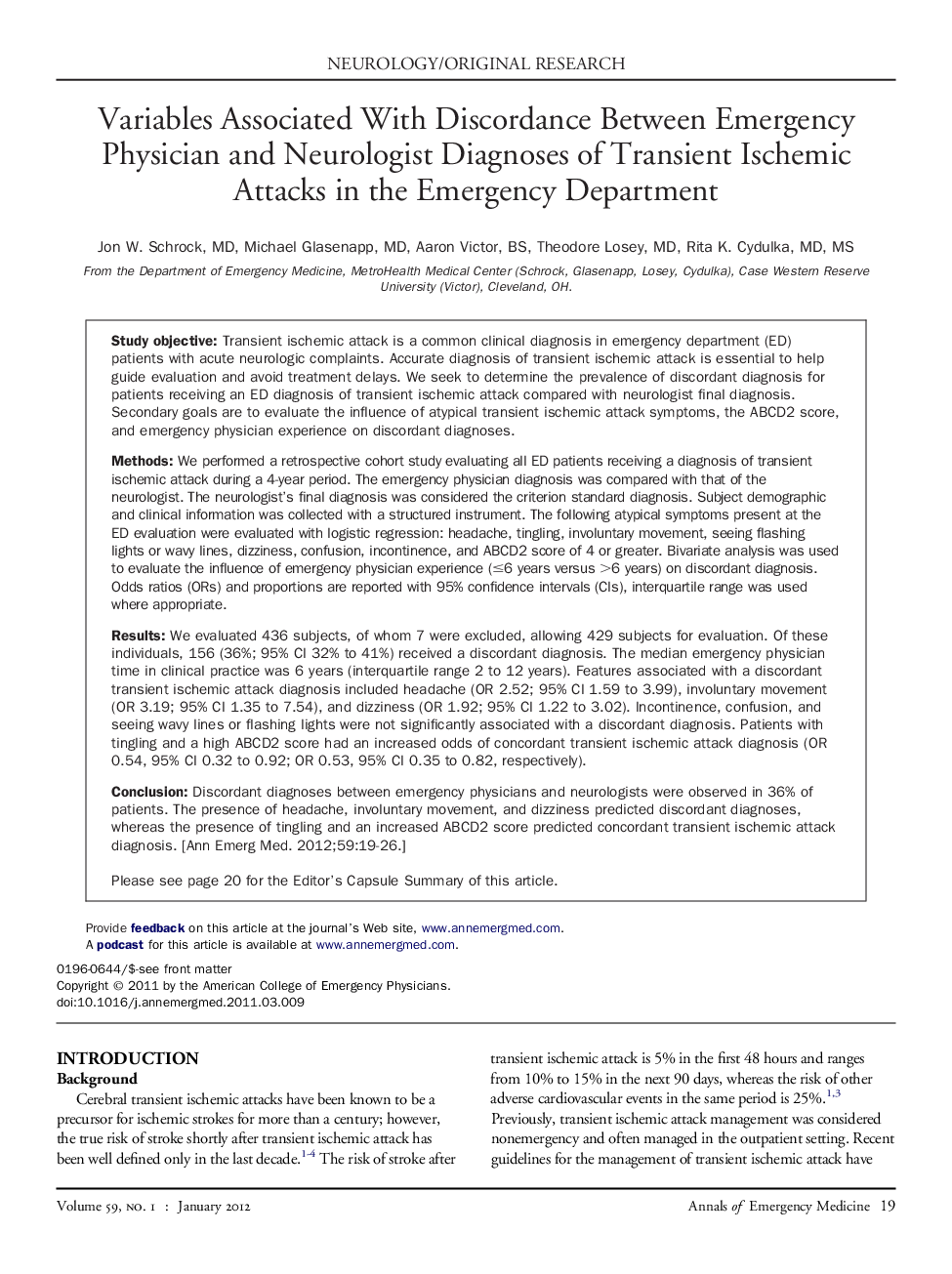| Article ID | Journal | Published Year | Pages | File Type |
|---|---|---|---|---|
| 3230326 | Annals of Emergency Medicine | 2012 | 8 Pages |
Study objectiveTransient ischemic attack is a common clinical diagnosis in emergency department (ED) patients with acute neurologic complaints. Accurate diagnosis of transient ischemic attack is essential to help guide evaluation and avoid treatment delays. We seek to determine the prevalence of discordant diagnosis for patients receiving an ED diagnosis of transient ischemic attack compared with neurologist final diagnosis. Secondary goals are to evaluate the influence of atypical transient ischemic attack symptoms, the ABCD2 score, and emergency physician experience on discordant diagnoses.MethodsWe performed a retrospective cohort study evaluating all ED patients receiving a diagnosis of transient ischemic attack during a 4-year period. The emergency physician diagnosis was compared with that of the neurologist. The neurologist's final diagnosis was considered the criterion standard diagnosis. Subject demographic and clinical information was collected with a structured instrument. The following atypical symptoms present at the ED evaluation were evaluated with logistic regression: headache, tingling, involuntary movement, seeing flashing lights or wavy lines, dizziness, confusion, incontinence, and ABCD2 score of 4 or greater. Bivariate analysis was used to evaluate the influence of emergency physician experience (≤6 years versus >6 years) on discordant diagnosis. Odds ratios (ORs) and proportions are reported with 95% confidence intervals (CIs), interquartile range was used where appropriate.ResultsWe evaluated 436 subjects, of whom 7 were excluded, allowing 429 subjects for evaluation. Of these individuals, 156 (36%; 95% CI 32% to 41%) received a discordant diagnosis. The median emergency physician time in clinical practice was 6 years (interquartile range 2 to 12 years). Features associated with a discordant transient ischemic attack diagnosis included headache (OR 2.52; 95% CI 1.59 to 3.99), involuntary movement (OR 3.19; 95% CI 1.35 to 7.54), and dizziness (OR 1.92; 95% CI 1.22 to 3.02). Incontinence, confusion, and seeing wavy lines or flashing lights were not significantly associated with a discordant diagnosis. Patients with tingling and a high ABCD2 score had an increased odds of concordant transient ischemic attack diagnosis (OR 0.54, 95% CI 0.32 to 0.92; OR 0.53, 95% CI 0.35 to 0.82, respectively).ConclusionDiscordant diagnoses between emergency physicians and neurologists were observed in 36% of patients. The presence of headache, involuntary movement, and dizziness predicted discordant diagnoses, whereas the presence of tingling and an increased ABCD2 score predicted concordant transient ischemic attack diagnosis.
